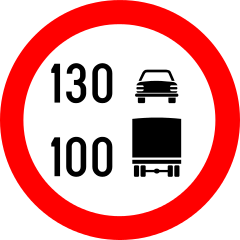
How to add new classes to your ML model? 🍏🍎🍊... 🍌?
You have a large multi-class NN in production.
You discover a new important class and want to add support for it *quickly* and with *low* risk.
Example: traffic signs recognition for self-driving cars 🛑🚗
Thread 👇
You have a large multi-class NN in production.
You discover a new important class and want to add support for it *quickly* and with *low* risk.
Example: traffic signs recognition for self-driving cars 🛑🚗
Thread 👇
The naive approach 🤷♂️
Collect examples of the new class (for example a new traffic sign), label them and retrain the whole NN.
✅ It will probably work
❌ It will be time consuming, especially for big models.
❌ Risk for unintended regressions
Collect examples of the new class (for example a new traffic sign), label them and retrain the whole NN.
✅ It will probably work
❌ It will be time consuming, especially for big models.
❌ Risk for unintended regressions
Freezing the first layers 🥶
Typical CNNs learn generic image features in the initial layers and they will likely apply to the new sign as well.
You can freeze the weights of the initial layers and only retrain the last fully connected layer(s).
Typical CNNs learn generic image features in the initial layers and they will likely apply to the new sign as well.
You can freeze the weights of the initial layers and only retrain the last fully connected layer(s).
✅ Faster retrain, because only the last layers are updated
✅ Lower risk for regressions
❌ For signs that look very differently, the CNN may lack the required features, leading to poor performance
❌ Still some risk for regression, because we touch all classes.
✅ Lower risk for regressions
❌ For signs that look very differently, the CNN may lack the required features, leading to poor performance
❌ Still some risk for regression, because we touch all classes.
Extracting high-level features ⭕️⚪️6⃣
Train the NN to extract high-level features suitable for traffic signs, like shape, color, text or digits.
Define rules to classify each sign based on these features.
(Special credits to @ernestomancebo and @KwasiRansom for this idea)
Train the NN to extract high-level features suitable for traffic signs, like shape, color, text or digits.
Define rules to classify each sign based on these features.
(Special credits to @ernestomancebo and @KwasiRansom for this idea)
✅ No need to retrain
✅ Low risk because classes can be separated well
✅ Will work well for speed limits
❌ Won't work for some sign categories, like for example warning signs that only differ by their pictogram
❌ Won't work for signs with new shapes
✅ Low risk because classes can be separated well
✅ Will work well for speed limits
❌ Won't work for some sign categories, like for example warning signs that only differ by their pictogram
❌ Won't work for signs with new shapes
One-shot learning 🛑▶️🔢
Transform sign images into a latent space, where they can be compared. Each class image is then described by a feature vector.
Siamese NNs can trained to transform images of the same class to very similar feature vectors in a latent space.
Transform sign images into a latent space, where they can be compared. Each class image is then described by a feature vector.
Siamese NNs can trained to transform images of the same class to very similar feature vectors in a latent space.
How it works?
1⃣ Choose examples for the known classes and precompute their feature vectors
2⃣ Transform new images to the latent space and find the best match to a known class
3⃣ When a new class is found, simply add an example image to the set of known classes.
1⃣ Choose examples for the known classes and precompute their feature vectors
2⃣ Transform new images to the latent space and find the best match to a known class
3⃣ When a new class is found, simply add an example image to the set of known classes.
✅ No retrain needed
✅ Low risk for regression
✅ Only few examples of the new class needed
❌ May not work well if the new sign is very different and not supported well by the encoder
✅ Low risk for regression
✅ Only few examples of the new class needed
❌ May not work well if the new sign is very different and not supported well by the encoder
And finally some examples of traffic signs that you may not think exist until you encounter them... 😁 







• • •
Missing some Tweet in this thread? You can try to
force a refresh






